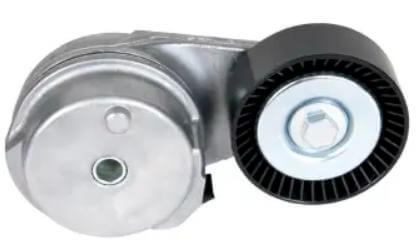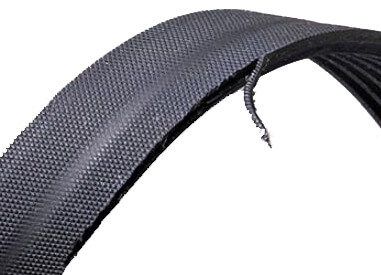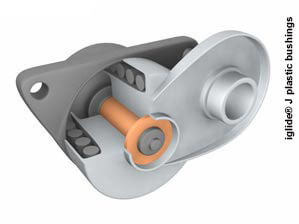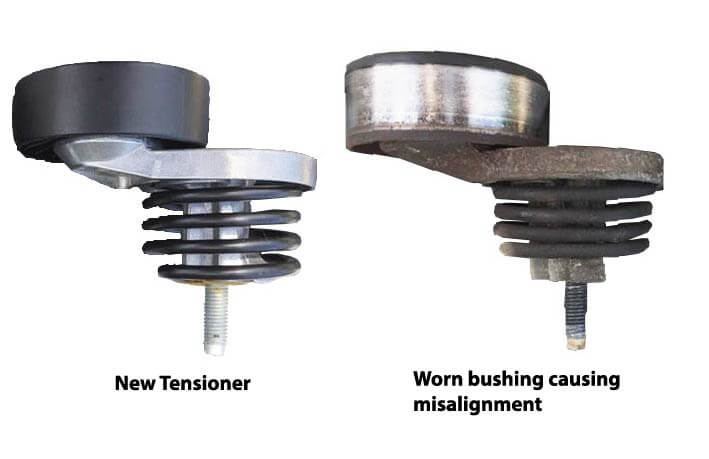Serpentine Belt noise
Serpentine belt noise squeal or chirp
Belt squeal and belt chirp are caused by three things
Three common causes of belt squeal and belt chirp
1) Improper tension due to a worn automatic tensioner or misadjustment of a manual tensioner
2) The belt is worn or an idler or rotating component is binding
3) Driven component(s) are out of alignment
Belt dressing and lubricating sprays will never fix a belt noise, squeal or chirp
NOTE: Never spray a drive belt with belt dressing, WD-40 or any lubricant to quiet belt noise
A serpentine belt can be damaged by motor oil and coolant. If you have an ongoing oil or coolant leak that drips onto the belt, fix that first. And, despite the fact that many Internet sources tell you to spray WD-40 onto a belt to quiet the noise or detect the cause, DON’T do it. You will ruin the belt.
Belt “dressing” is nothing more than a tacky substance that’s designed to create more friction. The belt may grip better temporarily, but it’s never a permanent fix. Worse yet, the tacky substance attracts and holds road grit and that grit actually grinds up your belt and the pulley, destroying both.
1) Belt tension is the #1 cause of belt squeal
A worn automatic serpentine belt tensioner or improper tension from a manual belt tensioning system will cause the belt to squeal. Most people blame the belt and replace it only to find the belt noise returns. You may think the automatic belt tensioner is in good shape simply because it applies some tension to the belt—not true!.
Automatic belt tensioners have a lifespan of about 100K miles. When the tensioner wears, it creates alignment problems and belt slip which causes a loud belt chirp or belt squeal, especially on cold starts in the morning. If you don’t fix it, you’ll not only wear out the belt, but cause damage to the driven components. That’s right, a misaligned belt or weak belt tensioner can damage the bearings in your alternator, power steering pump and AC compressor. I’ll show you several ways to diagnose a serpentine belt chirp or squeal using just a spray bottle and water.
• It your automatic belt tensioner has over 100K miles on it, replace it.
Signs of a worn tensioner:
• It creaks as you rotate it. That means the spring inside is rusted
• Rust powder is on the tensioner
• The tensioner arm moves more than 1/8″ while the engine is running. For more information on diagnosing a worn belt tensioner, see this post.
#2 Worn belt or worn idler or binding rotating component
Check for a worn belt
Serpentine belts (also called polygroove belts) are made up of multiple V’s. Starting around the 2000 model year, carmakers switched away from neoprene belts to EPDM rubber. EPDM rubber doesn’t heat crack like neoprene, so checking a belt for cracks is no longer an accurate way to check for belt wear.
An EPDM belt can look find but still be worn out. When the small V’s wear out, the belt rides deeper into the pulley grooves and actually drive the components from the belt backing. That causes the belt to slip and squeal. See this post on how to check for a worn serpentine (polygroove) belt.

This illustration shows how rib wear can cause the belt to lose gripping power. The belt’s only contact with the pulley is at the bottom of the rib valley. It simply loses its ability to wedge into the pulley “V”. So the belt slips, chirps, squeals and the driven component loses efficiency.
Check for worn roller/pulley or binding rotating component
A worn bearing in an idler roller/pulley can cause  the roller/pulley to drag or bind. That causes the belt to slip and make noise. Use an an automotive stethoscope to narrow down the location of the noise. See this post on how to do that. Then remove the belt and spin each idler roller, pulley or driven component to see if it spins freely. If not, replace it.
the roller/pulley to drag or bind. That causes the belt to slip and make noise. Use an an automotive stethoscope to narrow down the location of the noise. See this post on how to do that. Then remove the belt and spin each idler roller, pulley or driven component to see if it spins freely. If not, replace it.
3) Driven component(s) are out of alignment
The #1 sign of an alignment problem is a frayed belt edge
 The #2 sign of an alignment problem is squeal or chirp.
The #2 sign of an alignment problem is squeal or chirp.
A worn automatic tensioner can cause an out of alignment condition.
The #1 cause of misalignment is pivot bushing wear

The tensioning arm rotates around the yellow plastic pivot arm bushing
inside the automatic tensioner. The tensioner is made in two pieces. One piece is bolted to the engine and has a slot to hold one end of the tensioning spring.
The second piece is the movable portion. It rotates around a brass or plastic bushing. When that bushing wears out, the tension arm gets cocked, making the belt ride to the high side of the tensioning roller/pulley. That sends the belt onto the other pulleys with a side pull that creates chirping and squealing.
In addition to tensioner pivot arm bushing wear, you can also get worn idler roller bearings that cock the pulley slightly off parallel. That’s the 2nd most common cause of misalignment. The water test I’m about to describe will identify a misalignment problem and the link I’ve provided will help you determine which component is at fault.
Component misalignment can cause belt squeal or chirp
If you’ve recently replaced a rotating component like an alternator, AC compressor, Power Steering pump and now have a belt noise, double check the installation to make sure the bracket and component are installed properly.
How to test for the cause of serpentine belt noise
Perform the test under the same conditions as when you hear the noise. For example, if you hear a squeal first thing in the morning on a cold engine, test it under those conditions.
WARNING: Since you’ll be leaning in close on a running engine, be safe and remove loose clothing and jewelry.
What you’ll need for the test
• Powerful flashlight
• Spray bottle filled with water
Have a friend help you, especially if the noise only occurs at higher RPMS. And you really want a second person there to shut off the engine if you stick your hands where the don’t belong.
Most belt chirps and belt squeals occur in the shortest spans between two driven components.
Step 1 — start the engine and spray a stream of water onto the ribbed side of the belt before it wraps around a pulley.
If the noise goes away, but returns again in a few minutes, the problem is misalignment.
If the noise gets louder, the problem is too little belt tension.
To diagnose misalignment, start by using an automotive stethoscope probe. Click here to read how to do that.
If you suspect a tension issue, click here to read about testing belt tensioners.
You may need a long wrench to move the serpentine belt tensioner. Find them here
© 2012 Rick Muscoplat
Posted on by Rick Muscoplat
